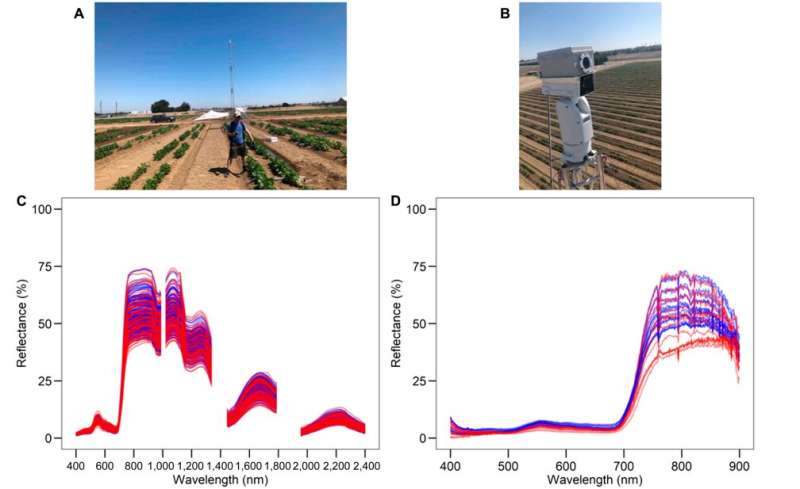This article has been reviewed according to Science X's editorial process and policies. Editors have highlighted the following attributes while ensuring the content's credibility:
fact-checked
trusted source
proofread
Researchers examine drought resistance traits in beans using hyperspectral remote sensing

Crops adapt to climatic and environmental changes by exhibiting certain modified biological traits. For instance, plants growing in deserts exhibit drought resistance. However, at times, plant breeding becomes necessary to ensure optimal crop yields, stress response, and water utilization. High-throughput phenotyping tools are then used for the cost-effective and rapid screening of desired biological traits.
However, such monitoring becomes laborious and time-consuming. It can also lead to subjective interpretation and crop destruction. A research team has recently made an attempt to overcome this limitation using rapid hyperspectral remote sensing. This paper was published in Plant Phenomics.
Says lead author Christopher Y. S. Wong from the Department of Plant Sciences, University of California, Davis, "We assessed physiological (stomatal conductance and predawn and midday leaf water potential) and ground- and tower-based hyperspectral remote sensing (400 to 2,400 nm and 400 to 900 nm, respectively) measurements to evaluate drought response in 12 common bean and 4 tepary bean genotypes across 3 field campaigns (1 predrought and 2 post-drought)."
The research team harnessed the power of hyperspectral imaging—extracting data pertaining to specific crop traits from various regions of the electromagnetic spectrum using advanced imaging techniques—with the help of a handheld device and tower-based equipment. The bean plantation was irrigated or left unirrigated to mimic normal and drought conditions respectively. The collected data were then analyzed with the help of a machine-learning-based technique called partial least squares regression (PLSR).
PLSR modeling was able to specifically examine two physiological traits in common and tepary bean—stomatal conductance and leaf water potential (LWP). Both stomatal conductance and LWP are indicators of plant water status and often used for evaluating drought tolerance.
Senior author Thomas N. Buckley, an Associate Professor from the Department of Plant Sciences, remarks, "Tepary beans, native to semiarid and arid environments, are generally more drought tolerant than common beans. We explore these common and tepary bean genotypes in a field experiment with irrigated (control) and terminal drought treatments."
The research team also deployed unmanned aerial vehicles (drones) to further facilitate the remote measurements. A comparison was then made to assess the effectiveness of ground-based and tower-based methods. For instance, the team noticed that the ground-based method generally performed better than the tower-based method for all 3 traits—stomatal conductance, predawn LWP, and midday LWP. The researchers then used heatmap clustering—primarily used to highlight drought response—to characterize the drought response phenotypes.
The hyperspectral data was able to successfully predict the bean traits under investigation. Moreover, there was good agreement between ground-based and physiological measurements, thus validating the technique. According to the authors, this new remote-sensing-based modern agricultural technique can also be used for predicting crop traits in well-irrigated and drought-prone geographies.
"This study demonstrates applications of high-resolution hyperspectral remote sensing for predicting plant traits and phenotyping drought response across genotypes for vegetation monitoring and breeding population screening," concludes corresponding senior author Troy S. Magney.
More information: Christopher YS Wong et al, Hyperspectral Remote Sensing for Phenotyping the Physiological Drought Response of Common and Tepary Bean, Plant Phenomics (2022). DOI: 10.34133/plantphenomics.0021
Provided by NanJing Agricultural University





















